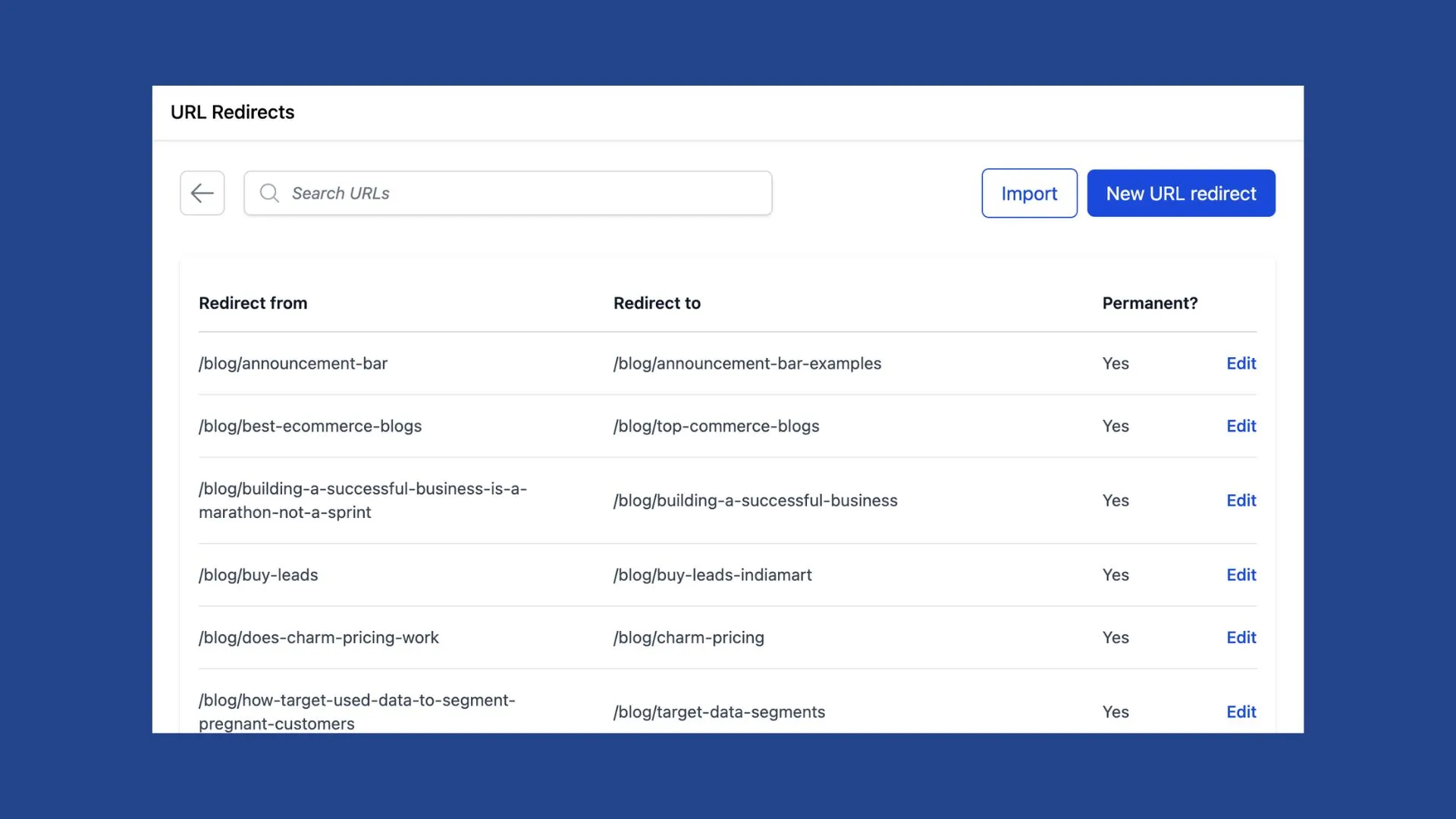December 16, 2024
URL Redirects
Konigle's URL Redirects feature helps you save repetitive work while managing URL redirects.
Every successful website evolves. You may want to prune old pages, update a URL slug for better SEO, or combine multiple articles into one. This is a natural part of a well-maintained site, but it introduces a risk: broken links.
When a URL changes, you don't just lose traffic from a search engine. You lose valuable bookmarks, backlinks from other sites, and internal links that you’ve built over time. Without proper URL redirects, visitors and search engine crawlers will hit a dead end, damaging your user experience and SEO.
On most website builders, managing these redirects is a frustrating and error-prone process. It often involves digging into server files, installing a bloated third-party plugin, or using a basic feature that causes more problems than it solves.
All of us who have built websites long enough, have seen how plugins add JavaScript redirects on WordPress websites. These url redirect implementations add bloat to a website, lead to redirects in sitemaps and internal urls.
- Gopal Hegde, CTO Konigle
This usually leaves you with a ton of manual work to clean up redirects in your sitemap and internal links, which can easily lead to mistakes.
We believe managing your website's redirects should be a seamless, high-performance process, not a technical chore. That's why Konigle has a native URL redirect routing feature that is highly performant and works automatically without adding any bloat to your website.
To make this powerful tool even easier to use, we built our very own digital employee, Tim, aka Konigle AI, who is able to execute tasks you send via email.
- Integrated Deletion: When you want to delete a page, you'll be given the option to "delete and create a redirect." This saves you from hunting for the page and simplifies a crucial step in maintaining a clean website. Just tell Tim what page should be deleted and which URL to redirect it to.
- Add, Edit, and Remove URL: You can add, edit, or remove URL redirects with ease. No need to learn a whole new interface from scratch; just email Tim with the URLs to be added, edited, and removed.
[Upcoming Feature] Apart from this, after a URL is redirected, all internal references of the URL are automatically replaced with the redirected URL, without you needing to manually replace any URL.

